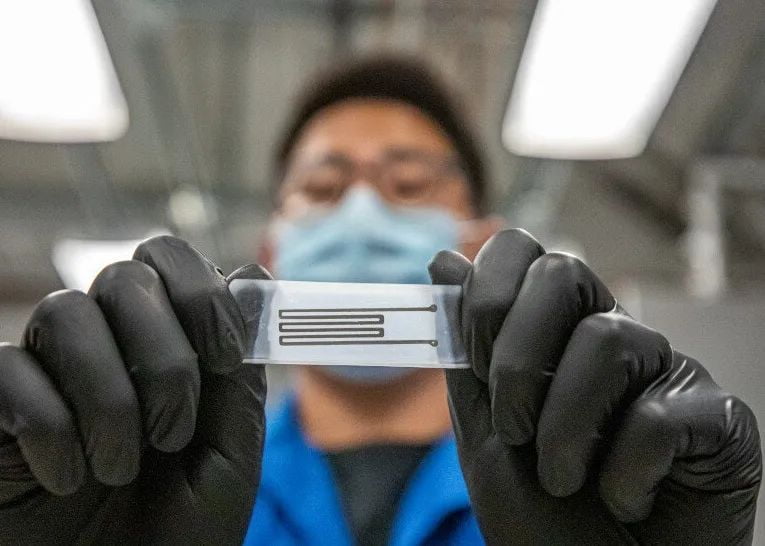The e-waste problem will get worse over time. Recently, a team of researchers from the U.S. Department of Energy's Lawrence Berkeley National Laboratory and the University of California, Berkeley, has proposed a potential solution: a fully recyclable, biodegradable printed circuit. They report in the journal Advanced Materials on the new device, an advance that could divert wearables and other flexible electronics from landfills and mitigate the health and environmental hazards of heavy metal waste.
In a previous study published in the journal Nature, the team found that embedding purified enzymes such as Burkholderia cepacia lipase (BC-lipase) in plastic materials accelerated their degradation. Instead of the expensive purified enzyme, the team used a cheaper, off-the-shelf "mixture" of BC-lipase. This significantly reduced the cost and facilitated the mass production of the circuit.

Researchers demonstrate biodegradable printed circuits
Researchers have developed a printable "conductive ink" that consists of a biodegradable polyester binder, conductive fillers such as silver flakes or carbon black, and a commercially available enzyme mixture. The conductivity of the ink comes from silver or carbon black particles, and a biodegradable polyester binder acts as the glue.
The researchers used a 3D printer with conductive ink to print circuit patterns on a variety of surfaces, including rigid biodegradable plastic, flexible biodegradable plastic and fabric, demonstrating that the ink can adhere to a variety of materials. Once the ink dries, it forms an integrated circuit device.
To test its shelf life and durability, the researchers stored a printed circuit in the lab for seven months without controlling humidity or temperature, and found that the circuit was as conductive as it was before storage.
They immersed the circuits in warm water to test their recyclability. Within 72 hours, the circuit material degraded into silver particles that were completely separated from the polymer binder and the polymer broke down into reusable monomers. The researchers were able to easily recover the metal without additional processing, and by the end of the experiment, they determined that approximately 94 percent of the silver particles could be recovered and reused.
The circuit is still degradable after 30 days of operation, indicating that these enzymes are still active. This is attributed to the addition of an enzyme protector.
The circuit may serve as a sustainable alternative to disposable plastics used in transient electronic devices, such as biomedical implants or devices like environmental sensors, that will decompose over time, the researchers said.

